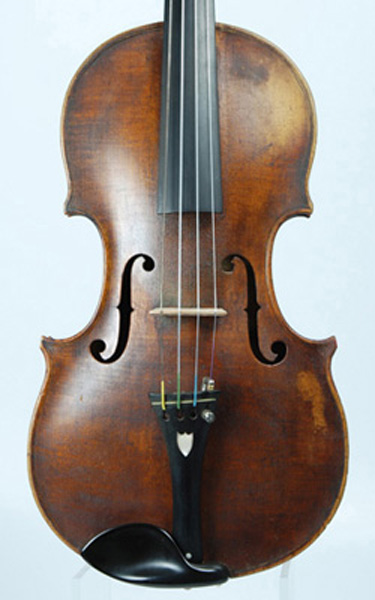
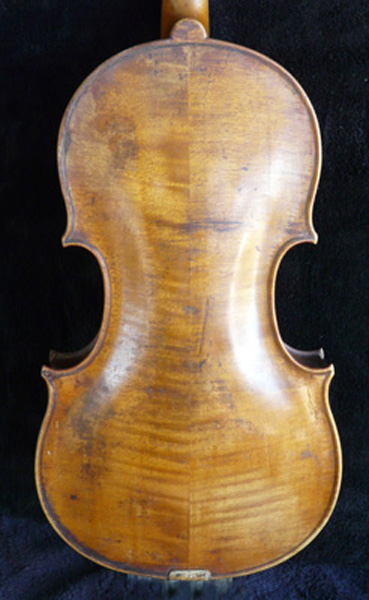
1784 Longman & Broderip |
A fine fiddle produced by the Longman & Broderip Company |
 |
 |
The model is broad with medium archings and softly worked flutings. The table is of a fine grained spruce. The two piece back is mildly flamed maple, while the ribs are very plain. |
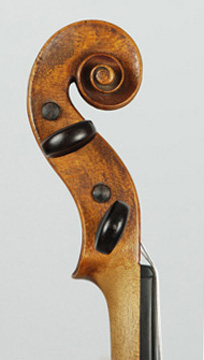 |
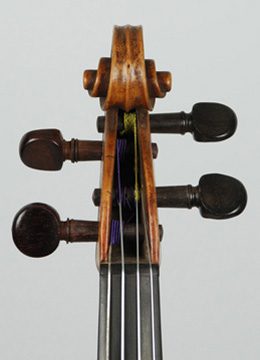 |
The neck and scroll are original. The scroll and pegbox are cleanly and accurately cut. The seller informed me that the inner work also exhibits excellent workmanship, and employs all four corner blocks and full willow linings at table and back joints. |
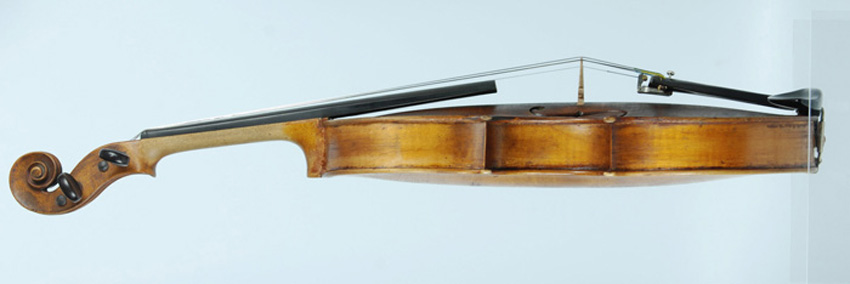 |
The bridge is at the optimum height for ease of play. |
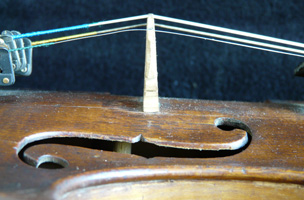 |
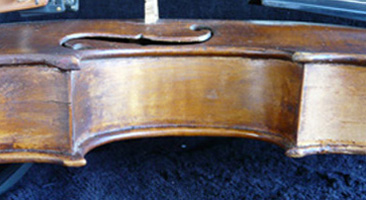 |
The violin is well preserved and almost crack free. There are two small, but stable crack in the ribs at the lower treble corner and one small cleat at the bottom of the treble side 'f' hole. The table and back are crack free -- no soundpost or bass bar problems. |
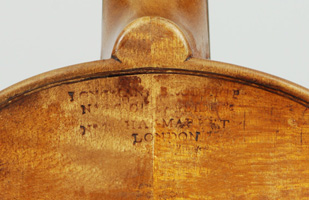 |
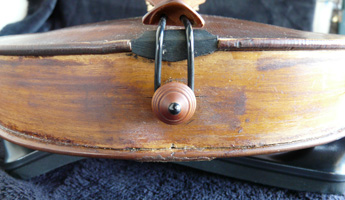 |
They branded the backs under the button with their logo.The seller said the right lower corner block had been completely replaced, although I see no evidence of that. The telltale residue of the original finish (ab. rt.) tells me a powerful solvent was used to do some stripping. The residue of the original varnish around the 'beesting' leads me to believe the original varnish was darker in color. |
The label bears inked writing in a German. The inked date of 1784 is legible. |
|
MEASURES |
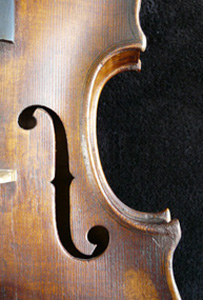 |
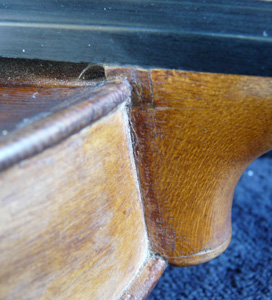 |
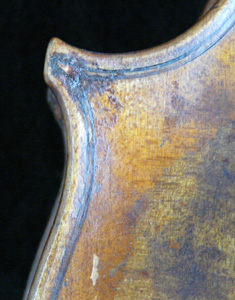 |
At some point in time, the neck was extended at the root. The splicing in of an additional 1/4" wedge of wood betweeen the heel block and the foot provided the additional length and proper backward camber for the neck in making the conversion from Baroque to modern stanards. |
SOUND & PLAYABILITY A great 'fiddle' from any angle. It has breadth, definition, sympathy and attenuation. It plays easily and boldly without any tinny irritations. |
return to the gallery page by clicking the link below http://stnichsigns.com/Makers'Orphans.html |